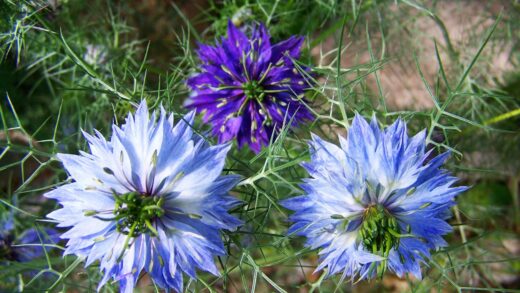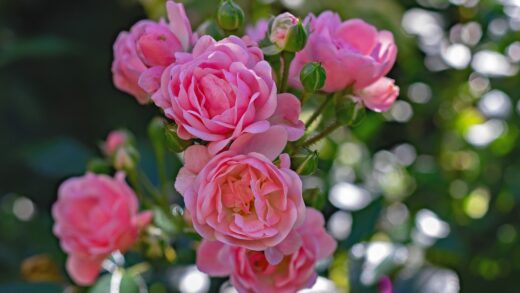Properly wintering an amaryllis is not merely about storage; it is a crucial and deliberate process that mimics the plant’s natural life cycle and is essential for stimulating it to bloom again. In its native habitat in the subtropical regions of South America, the plant experiences a distinct dry season, which serves as a period of rest. By recreating this dormant phase in a home environment, we provide the biological trigger the bulb needs to initiate the development of new flower buds. Without this carefully managed rest period, the bulb may continue to produce leaves but will likely fail to produce the spectacular flowers it is known for. Therefore, understanding and facilitating this dormancy is the key to achieving successive years of blooms.
The journey into dormancy begins in the late summer or early autumn, following the plant’s active growing season. After the amaryllis has finished blooming, it spends several months focused on foliage growth, using its leaves to photosynthesize and replenish the energy reserves within the bulb. As the days shorten and the light intensity decreases naturally, the plant will begin to show signs that it is preparing for rest. The leaves may start to lose their deep green color and begin to yellow, starting at the tips. This is a natural process of senescence and is the primary cue for you to begin altering its care routine to encourage a complete and restful dormancy.
The transition should be gradual. Start by reducing the frequency of watering over a period of several weeks. This slow withdrawal of moisture signals to the bulb that the dry season is approaching. At the same time, you must cease all fertilization. Providing nutrients at this stage would send a conflicting message to the plant, encouraging new growth when it should be preparing to shut down. This gradual tapering of water and food allows the plant to methodically draw the remaining energy and nutrients from its leaves and store them in the bulb before the foliage dies back completely.
Once the leaves have fully yellowed and withered, they can be cut off a few centimeters above the neck of the bulb. At this point, the bulb has entered its full dormant state. It is now ready to be moved to a suitable location for its winter rest. The objective is to provide an environment that is cool, dark, and dry. This trifecta of conditions ensures that the bulb remains in a state of suspended animation, safe from rot and premature sprouting, while the internal physiological processes that lead to flower bud formation take place.
The ideal dormancy environment
Finding the right location for the amaryllis to spend its dormancy is critical for success. The ideal environment must be consistently cool, with temperatures remaining between 10°C and 13°C. It is important that the temperature does not fluctuate wildly and, crucially, that it does not drop to freezing, as this would damage or kill the bulb. An unheated basement, a garage (provided it is protected from frost), a cool closet, or a cellar often provide these exact conditions. The coolness is a key trigger for the bulb’s internal clock.
More articles on this topic
The location must also be dark. Light is a primary stimulus for plant growth, and exposing the dormant bulb to light could encourage it to sprout prematurely, interrupting the resting phase before it has been completed. This would expend the bulb’s energy on weak, leafy growth rather than on the development of a flower stalk. If a perfectly dark location is not available, you can place the pot inside a cardboard box or cover it with a paper bag to exclude light effectively. The darkness reinforces the signal to the bulb that it is time to rest.
Finally, the environment must be dry. This is achieved primarily by having ceased all watering before storage. The bulb should be left in its pot with the dry soil, which acts as an insulating and protective layer. The surrounding air should also be relatively dry to prevent any mold or mildew from developing on the bulb or the soil surface. High humidity can sometimes be enough to stimulate root growth or cause fungal issues, even without direct watering. A well-ventilated, cool space will typically have a suitable level of ambient humidity for successful dormancy.
During this entire rest period, the amaryllis requires no care. You should not water it, feed it, or disturb it in any significant way. It is a time for benign neglect. Simply place it in its chosen cool, dark, and dry spot and let it rest. The duration of this dormancy is also important; a period of at least eight to twelve weeks is necessary to ensure the bulb has had sufficient time to complete the internal processes required for reblooming. You can mark a calendar to remind you when it is time to consider waking the plant up.
Waking the bulb from dormancy
After the bulb has completed its mandatory cool, dark, and dry rest for eight to twelve weeks, it is time to gently reawaken it to begin a new growth cycle. The timing for this can be planned so that the blooms appear around a specific time, such as the winter holidays. Typically, an amaryllis will bloom six to eight weeks after being brought out of dormancy, although this can vary depending on the variety and growing conditions. The first sign that a bulb is ready to break dormancy is often the appearance of the tip of a new flower stalk peeking out from the neck of the bulb.
More articles on this topic
The reawakening process begins by bringing the pot out of its cold storage and into a warm, brightly lit room. This change in temperature and the presence of light are the primary signals that stimulate the bulb to start growing again. Before you do anything else, this is the ideal time to perform some basic maintenance. You can refresh the soil by scraping off the top few centimeters and replacing it with fresh, nutrient-rich potting mix. Alternatively, if the plant is pot-bound or it has been two to three years, you can choose to repot the entire bulb into a new container with completely fresh soil.
The reintroduction of water is the next crucial step. Provide the bulb with a thorough, deep watering, allowing the water to completely soak the soil and drain through the bottom of the pot. This initial drink rehydrates the dormant roots and signals to the bulb that the “dry season” is over. After this first watering, it is essential to be patient and wait. Do not water the plant again until you see clear evidence of new growth. As with a newly planted bulb, watering a non-growing bulb is a recipe for rot.
Place the newly watered pot in a location that receives plenty of bright, indirect light and is consistently warm, ideally around 21-24°C. The warmth will help to encourage the flower stalk to grow. As the stalk elongates, remember to rotate the pot every few days to ensure it grows straight and does not lean excessively towards the light source. Once the stalk is actively growing, you can resume a regular watering schedule, allowing the top layer of soil to dry out between waterings. With this care, you will soon be rewarded with another spectacular floral display.
Alternative wintering methods
While leaving the bulb in its pot of dry soil is the most common and straightforward method for wintering, there are alternative approaches. Some gardeners prefer to remove the bulb from the soil entirely for its dormancy period. After the foliage has died back, the bulb is carefully lifted from the pot, and the soil is gently brushed off the roots. The roots can be trimmed slightly, and the bulb should be inspected for any signs of rot or disease. Any soft spots should be carefully excised, and the bulb should be allowed to air dry for a few days.
Once clean and dry, the bare bulb can be stored in a variety of ways. A common method is to place it in a paper bag, a mesh onion bag, or a cardboard box filled with a dry, insulating material like peat moss, vermiculite, or sawdust. This material helps to cushion the bulb and maintain a stable, dry environment. The container is then stored in the same required cool and dark location, with temperatures between 10°C and 13°C. This method can be space-saving if you have many bulbs to store.
Another advantage of storing the bulbs bare is that it allows for a thorough inspection before replanting. You can easily check for any developing rot or pest issues, such as mealybugs, that might be hiding at the base of the bulb. When it is time to wake the bulb, you simply pot it up in fresh soil as you would a new bulb, providing a completely refreshed growing environment. This method gives you precise control over the bulb’s condition throughout its dormancy.
It is important to note that some amaryllis cultivars, particularly certain species and their hybrids, may not require a completely dry dormancy. Some ever-green types may retain their leaves year-round. For these varieties, a period of cooler temperatures and reduced watering during the winter may be sufficient to encourage reblooming, without forcing the plant to lose all its foliage. However, for the large-flowered hybrids that are most commonly grown as houseplants, a pronounced dry and dormant period is the most reliable method for ensuring a spectacular annual floral show.


















